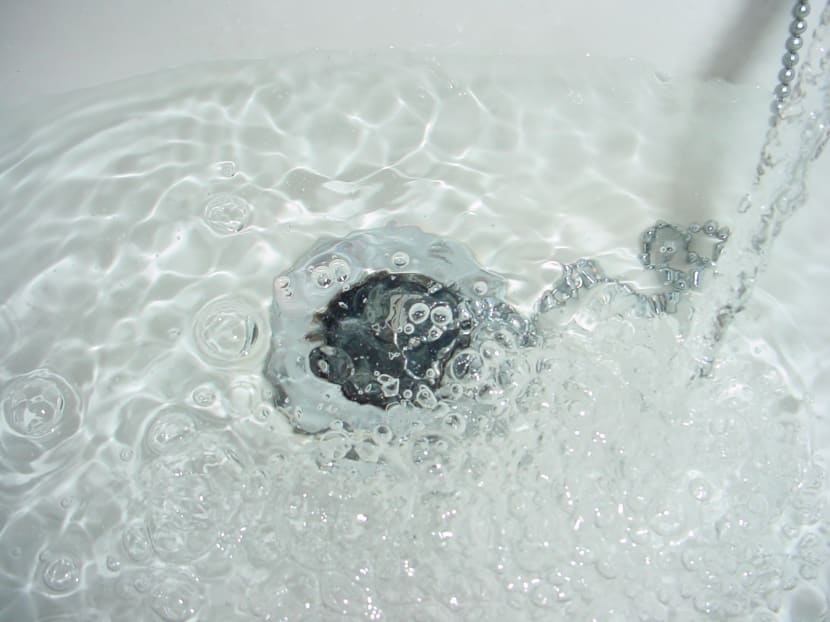Price of water to increase for the first time in 17 years
SINGAPORE — Water prices will go up after holding steady for 17 years, Minister for the Environment and Water Resources Masagos Zulkifli said on Tuesday (Feb 7), less than a month after he said the Government would adjust water charges when necessary.

The anticipated higher costs of producing water and the need to price water right in view of the less reliable weather are reasons behind the first price adjustment for water in Singapore in 17 years. Photo: www.freeimages.com
SINGAPORE — Water prices will go up after holding steady for 17 years, Minister for the Environment and Water Resources Masagos Zulkifli said on Tuesday (Feb 7), less than a month after he said the Government would adjust water charges when necessary.
Details such as the extent of the increase and when the new charges will take effect will be announced on Budget Day on Feb 20, he said during a visit to the Tuas Desalination Plant 3, which is set to be completed in November. The increase will apply to both households and non-domestic users.
Mr Masagos cited the anticipated higher costs of producing water and the need to price water right in view of the less reliable weather as reasons behind the price adjustment.
“Going forward, we have to ensure that assets we’ve put in (place) to prevent a critical situation of water disruption from Johor are also priced into water supply,” he said. The Linggiu Reservoir, which allows Singapore to draw water more reliably from the Johor River, is at 32 per cent. Singapore gets about half of its water from Malaysia, but Johor has experienced water supply issues in recent years.
Should dry weather return after the monsoon season, as it did in the last two years, there is a real risk that Linggiu could fail over the next two years, Mr Masagos posted on Facebook on Tuesday after the Tuas visit. “We need to plan for such contingencies, and make timely investments so that we will not be caught off-guard.”
Also adding costs to water operations are the fact that pipes have to be dug deeper due to urbanisation, and the renewal of old plants and pipes.
The use of desalination, the costliest and most energy-intensive of Singapore’s four “national taps”, is also set to increase to meet 30 per cent of the country’s water demand by 2026, from 25 per cent now. The other national taps are NEWater (treated used water) and water from local catchment areas.
Currently, water tariffs are tiered, depending on whether the water is for domestic, non-domestic or shipping use. For domestic users, there are two levels of tariffs (S$1.17 per cubic metre or S$1.40 per cubic metre), depending on consumption volume. Water conservation tax is set at 30 or 45 per cent of the tariff.
Mr Masagos said that water in Singapore is currently underpriced and “every time we have to pump from our NEWater and desalinated water (plants), it adds to the cost pressures operationally.”
Water policy expert Eduardo Araral at the Lee Kuan Yew School of Public Policy said the increase in water prices is “long overdue”. It is necessary to reduce consumption of both water and energy , and raising water tariffs is “a form of buying insurance, given the reality of climate change and the recurring droughts we now experience”.
While there should be measures to cushion the impact on poorer households, Dr Araral said middle and higher income households will not feel the pinch. According to data on Singapore Power’s website, the average water consumption of a five-room HDB household was 17.7 cubic metres in December last year — a bill of about S$27 before Goods and Services Tax. If prices rise by 25 per cent to compensate for inflation since the last revision, it is roughly the cost of a meal in the hawker centre, noted Dr Araral.
Dr Cecilia Tortajada of the LKYSPP said climate change and variability are putting enormous pressure on natural resource availability around the world, including water in Singapore.
“Populations have to be more aware that their decisions have an impact on the environment and pricing mechanisms are a very effective way to make people be more mindful of their use of resources,” she said. “It is now time for the population to (do) its part in water conservation.”
In 2013, Dr Tortajada and Professor Asit Biswas had said water prices in Singapore should be raised by at least 30 per cent.
The average water consumption per person per day here is about 151 litres, and the PUB’s target is to reduce it to 147 litres per day by 2020, and 140 litres per day by 2030.
Singapore consumes about 430 million gallons of water per day, with homes consuming 45 per cent and the non-domestic sector taking up the rest. By 2060, total water demand could almost double, with the non-domestic sector accounting for about 70 per cent. By then, NEWater and desalination will meet up to 85 per cent of Singapore’s future water demand, according to the PUB.
Singapore launched its fifth NEWater plant last month and has two more desalination plants to be completed by 2020. On Tuesday, the PUB requested for proposals from four pre-qualified applicants to build the fifth desalination plant, which will be on Jurong Island.






